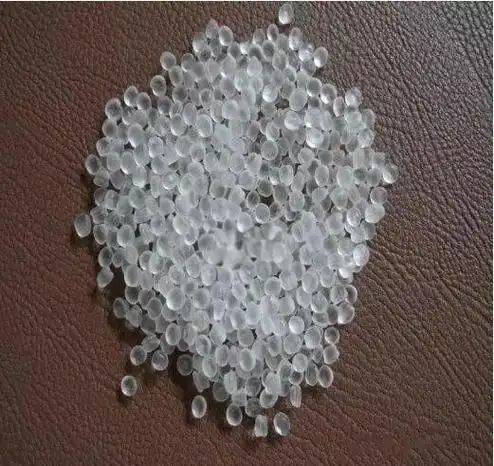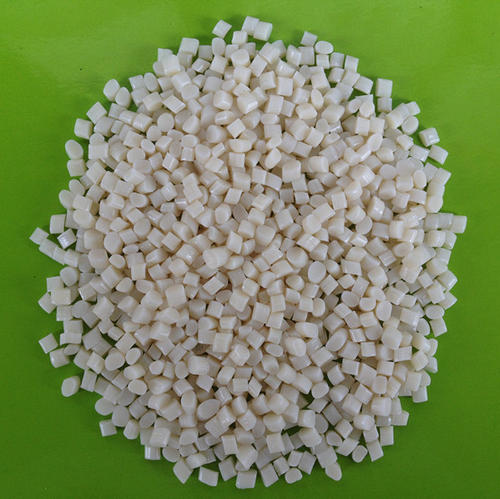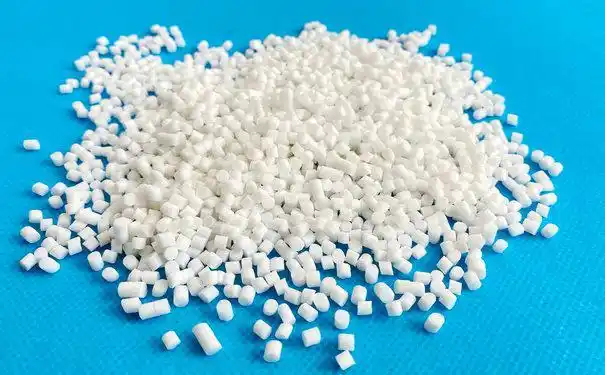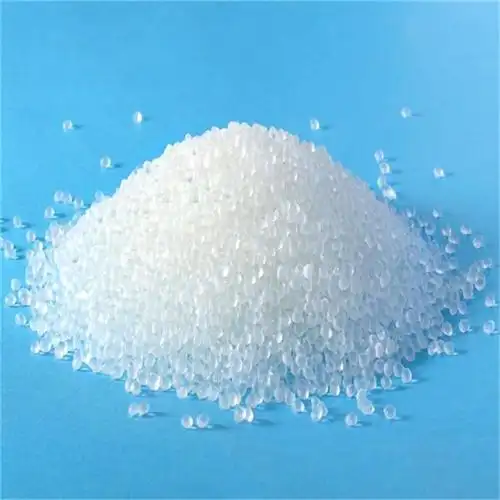In the materials and manufacturing world, TPE (thermoplastic elastomer) has gained popularity due to its unique combination of properties such as flexibility, durability and recyclability. However, one issue that users often encounter is that TPE materials can emit unpleasant odors, especially when they are of poor quality or stored or processed improperly. I understand the annoyance and concerns that arise when dealing with unpleasant-smelling TPE materials. Today I would like to share some of my insights and experiences on how long it usually takes for such materials to be returned to service after the odor has been released.

Understanding the Source of the Odor in TPE Materials
Before diving into the timeframe for odor dispersion, it’s essential to understand where the unpleasant smell in TPE materials comes from. There are several potential sources:
1. Residual Monomers and Oligomers
During the manufacturing process of TPE, monomers and oligomers (small molecules that are the building blocks of polymers) may not fully polymerize. These residual substances can have a strong odor and can gradually release over time, causing the TPE material to smell bad.
2. Additives and Plasticizers
To enhance the properties of TPE, various additives and plasticizers are often added. Some of these chemicals may have a distinct odor, especially if they are of lower quality or have not been properly formulated. Over time, these additives can migrate to the surface of the material, releasing their odor.

3. Processing Conditions
The processing conditions, such as temperature, pressure, and time, can also affect the odor of TPE materials. If the material is processed at too high a temperature or for too long, it can cause thermal degradation, leading to the formation of volatile organic compounds (VOCs) that have a strong odor.
4. Storage and Environmental Factors
Improper storage conditions, such as exposure to high humidity, heat, or sunlight, can also contribute to the development of odor in TPE materials. Additionally, if the material is stored in an environment with other odorous substances, it can absorb those odors through a process called adsorption.
Factors Affecting the Time Required for Odor Dispersion
The time it takes for bad-smelling TPE material to become usable after odor dispersion can vary widely depending on several factors. Here are some of the key considerations:
1. Severity of the Odor
The intensity and nature of the odor play a significant role in determining how long it will take to disperse. Mild odors may dissipate relatively quickly, within a few days or weeks, while strong, pungent odors could take several months or even longer to fully disappear.
2. Type and Quality of TPE Material
Different types and qualities of TPE materials have varying levels of odor-causing substances. Higher-quality TPE materials are often formulated with better additives and have fewer residual monomers and oligomers, resulting in less odor and a shorter dispersion time. On the other hand, lower-quality TPE materials may have a more persistent odor that takes longer to disperse.
3. Processing History
The way the TPE material was processed can also impact the odor dispersion time. If the material was processed under optimal conditions, with proper temperature and time control, it is likely to have less odor and a shorter dispersion time. Conversely, if the material was over-processed or processed at incorrect temperatures, it may have a more pronounced odor that takes longer to go away.

4. Storage Conditions
As mentioned earlier, storage conditions can greatly affect the odor of TPE materials. If the material is stored in a well-ventilated, cool, and dry place, the odor may disperse more quickly. However, if it is stored in a humid, hot, or poorly ventilated environment, the odor may persist for a longer period.
5. Ventilation and Air Circulation
The level of ventilation and air circulation in the storage or usage area is crucial for odor dispersion. Good ventilation helps to remove the volatile odor-causing substances from the air, speeding up the process. In a poorly ventilated space, the odor may linger for a longer time.
Methods to Accelerate Odor Dispersion
While waiting for the odor to naturally disperse is an option, there are several methods you can use to accelerate the process and make the TPE material usable sooner.
1. Aeration
One of the simplest and most effective methods is to expose the TPE material to fresh air. Place the material in a well-ventilated area, preferably outdoors if possible, and allow it to air out for several days or weeks. The movement of air helps to carry away the odor-causing substances, reducing the smell over time.
2. Washing
For some TPE materials, washing can be an effective way to remove surface odors. Use a mild detergent and warm water to gently clean the material. Be sure to rinse it thoroughly to remove any soap residue. After washing, allow the material to air dry completely in a well-ventilated area. However, it’s important to note that not all TPE materials are suitable for washing, as some may be damaged by water or detergents. Always check the manufacturer’s recommendations before attempting to wash the material.

3. Baking
In some cases, baking the TPE material at a low temperature can help to accelerate the release of odor-causing substances. Place the material in an oven set to a low temperature, around 50-60°C (122-140°F), for a few hours. Keep a close eye on the material to ensure that it doesn’t melt or deform. Baking can help to drive out the volatile compounds, reducing the odor. However, this method should be used with caution, as overheating can cause damage to the material.
4. Using Odor Absorbers
Odor absorbers, such as activated charcoal or baking soda, can be placed near the TPE material to help absorb the odor. Place the odor absorber in a container or bag with the TPE material and seal it tightly. Leave it for several days or weeks to allow the odor absorber to work its magic. This method is particularly useful for small items or when you want to speed up the odor dispersion process in a confined space.
5. Professional Treatment
If the odor is particularly severe or persistent, you may consider seeking professional treatment. There are companies that specialize in odor removal and can use advanced techniques, such as ozone treatment or thermal desorption, to eliminate the odor from the TPE material. While this option may be more expensive, it can be effective in cases where other methods have failed.

Table: Estimated Time for Odor Dispersion Based on Different Factors
| Factor | Mild Odor | Moderate Odor | Strong Odor |
|---|---|---|---|
| Severity of Odor | 1-2 weeks | 2-4 weeks | 1-3 months or longer |
| Type and Quality of TPE Material | High-quality: 1-2 weeks Lower-quality: 2-4 weeks |
High-quality: 2-4 weeks Lower-quality: 4-8 weeks |
High-quality: 1-2 months Lower-quality: 3 months or longer |
| Processing History | Optimal processing: 1-2 weeks Suboptimal processing: 2-4 weeks |
Optimal processing: 2-4 weeks Suboptimal processing: 4-8 weeks |
Optimal processing: 1-2 months Suboptimal processing: 3 months or longer |
| Storage Conditions | Well-ventilated, cool, dry: 1-2 weeks Poorly ventilated, humid, hot: 2-4 weeks |
Well-ventilated, cool, dry: 2-4 weeks Poorly ventilated, humid, hot: 4-8 weeks |
Well-ventilated, cool, dry: 1-2 months Poorly ventilated, humid, hot: 3 months or longer |
| Ventilation and Air Circulation | Good ventilation: 1-2 weeks Poor ventilation: 2-4 weeks |
Good ventilation: 2-4 weeks Poor ventilation: 4-8 weeks |
Good ventilation: 1-2 months Poor ventilation: 3 months or longer |
Real-World Examples and Case Studies
To better understand how long it takes for bad-smelling TPE material to become usable after odor dispersion, let’s look at some real-world examples and case studies.
Case Study 1: TPE Phone Cases
A manufacturer of TPE phone cases received a batch of cases that had a strong, chemical-like odor. The cases were stored in a warehouse with poor ventilation, which likely contributed to the odor problem. The manufacturer decided to air out the cases in a well-ventilated area for several weeks. After about three weeks, the odor had significantly reduced, and the cases were deemed usable for sale.
Case Study 2: TPE Toys
A toy company purchased a large quantity of TPE toys from a supplier. Upon receiving the toys, they noticed a mild, rubbery odor. The toys were stored in a cool, dry storage room with good air circulation. The company decided to let the toys air out for a week before packaging them for sale. After a week, the odor had mostly dissipated, and the toys were ready to be shipped to customers.
Case Study 3: TPE Medical Devices
A medical device manufacturer used TPE components in one of their products. However, during quality control testing, they discovered that the components had a slight odor. The manufacturer was concerned about the potential impact of the odor on patient safety and decided to investigate further. They found that the odor was due to residual monomers from the manufacturing process. The manufacturer implemented a baking process at a low temperature to accelerate the release of the monomers. After baking the components for a few hours and then allowing them to air out for an additional week, the odor had completely disappeared, and the components were approved for use in the medical device.

Tips for Preventing Odor in TPE Materials
While it’s important to know how to deal with bad-smelling TPE material, it’s even better to prevent the odor from occurring in the first place. Here are some tips to help you prevent odor in TPE materials:
1. Choose High-Quality TPE Materials
When selecting TPE materials for your applications, opt for high-quality products from reputable suppliers. High-quality TPE materials are formulated with better additives and have fewer residual monomers and oligomers, reducing the likelihood of odor problems.
2. Optimize Processing Conditions
Ensure that the TPE material is processed under optimal conditions. Follow the manufacturer’s recommendations for temperature, pressure, and time. Avoid over-processing or processing at incorrect temperatures, as this can lead to thermal degradation and the formation of odor-causing substances.
3. Proper Storage
Store TPE materials in a well-ventilated, cool, and dry place. Avoid exposing the material to high humidity, heat, or sunlight, as these conditions can contribute to the development of odor. If possible, store the material in its original packaging or in airtight containers to prevent the absorption of odors from the environment.
4. Regular Inspection and Maintenance
Regularly inspect your TPE materials for signs of odor or degradation. If you notice any issues, take prompt action to address them. This may include airing out the material, washing it (if suitable), or seeking professional treatment.

Conclusion
In conclusion, the time it takes for bad-smelling TPE material to become usable after odor dispersion can vary depending on several factors, including the severity of the odor, the type and quality of the material, the processing history, storage conditions, and ventilation. While mild odors may dissipate within a few days or weeks, stronger odors could take several months or even longer to fully disappear.
By understanding the sources of odor in TPE materials and implementing methods to accelerate odor dispersion, such as aeration, washing, baking, using odor absorbers, or seeking professional treatment, you can make the TPE material usable sooner. Additionally, taking steps to prevent odor in the first place, such as choosing high-quality materials, optimizing processing conditions, proper storage, and regular inspection and maintenance, can help you avoid odor-related issues altogether.
Whether you’re a manufacturer, a retailer, or an end-user of TPE materials, dealing with bad-smelling TPE can be a frustrating experience. However, with the right knowledge and approaches, you can effectively manage the odor and ensure that your TPE materials are of high quality and suitable for their intended applications.

Related Questions and Answers
Q1: Can I use TPE material with a slight odor immediately after purchasing it?
A1: It’s generally not recommended to use TPE material with a slight odor immediately after purchasing it, especially if it’s for applications where odor could be a concern, such as in consumer products or medical devices. The odor may indicate the presence of volatile organic compounds (VOCs) or other substances that could potentially be harmful or affect the user experience. It’s best to allow the material to air out in a well-ventilated area for a period of time to let the odor dissipate before using it.
Q2: How can I tell if the odor in TPE material is harmful?
A2: It can be challenging to determine if the odor in TPE material is harmful just by smell alone. Some odors may be unpleasant but not necessarily harmful, while others could indicate the presence of potentially toxic substances. If you’re concerned about the safety of the TPE material, it’s advisable to consult with the manufacturer or a materials expert. They can provide information about the composition of the material and any potential health risks associated with the odor. Additionally, if the material is intended for use in a regulated industry, such as food or medical, it should comply with relevant safety standards and regulations.
Q3: Will the odor in TPE material come back after it has dispersed?
A3: In most cases, once the odor in TPE material has dispersed, it should not come back as long as the material is stored and used under proper conditions. However, if the material is exposed to factors that can cause the release of odor-causing substances again, such as high temperatures, humidity, or contact with certain chemicals, the odor may reappear. To prevent this, it’s important to store and handle the TPE material according to the manufacturer’s recommendations and avoid exposing it to conditions that could trigger odor issues.

Q4: Can I mask the odor in TPE material with fragrances?
A4: While it may be tempting to mask the odor in TPE material with fragrances, this is not a recommended solution. Masking the odor with fragrances only covers up the problem temporarily and does not address the underlying cause of the odor. Additionally, some fragrances may contain chemicals that could react with the TPE material or cause other issues. It’s better to focus on methods to actually disperse the odor, such as aeration, washing, or baking, rather than trying to mask it.
Q5: Are there any long-term effects of using TPE material with a persistent odor?
A5: The long-term effects of using TPE material with a persistent odor depend on the nature of the odor and the substances causing it. If the odor is due to the release of harmful VOCs or other toxic substances, prolonged exposure could potentially have health implications, especially for individuals who are in close contact with the material for extended periods. It’s important to take the odor seriously and take steps to address it, either by allowing the material to air out, seeking professional treatment, or replacing the material if necessary. If you have any concerns about the safety of using TPE material with a persistent odor, it’s best to consult with a health professional or a materials expert.





